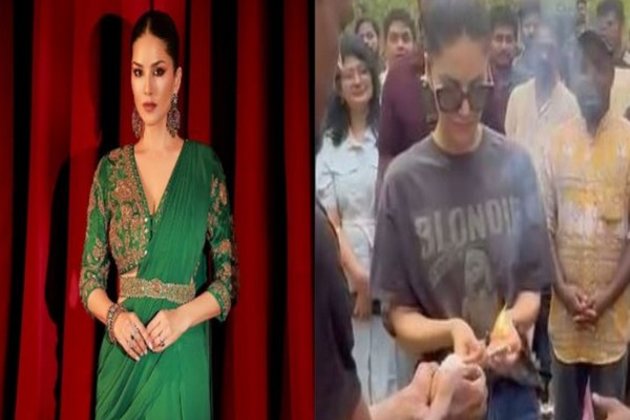2LT International News
The ever-changing story that put a Cardinal behind bars
Mar 28, 2020
This article attempts to get more precision on the conduct of the case against Cardinal George Pell, who is serving six years at Barwon Prison, by considering two sets of issues.
First, that when detective Chris Reed, with his superior Paul Sheridan sitting beside him, travelled to Rome, and shortly after took statements from Charles Portelli and Max Potter, the police must have realised how weak the complainant’s story was.
Second, that Mark Gibson, with the performance of Robert Richter in the first trial behind him, and the new jury of the second trial before him, must have reflected on how weak the evidence he had presented was. In each case these challenges met with response, the first I shall call “strategy,” the second “tactics.”
Regarding the weaknesses that the police discovered: In the first place, the idea of an assault immediately after Mass was quite untenable as Pell would always process to the West door (as would the choristers). In the second place, the complainant had situated the crimes in the busiest place imaginable, the sacristy after Sunday Mass. In the third place, the complainant at walk-through had supposedly discovered the wine in a storage kitchenette that in 1996 had actually been a wardrobe – the sinks only being installed eight years later.[i] In the fourth place, the sacristy in question was not Pell’s. Ironically, this detail would count against the then Archbishop as it transpired that at the time Pell’s sacristy was not operational, although that fact was not learned until an informal conversation that Mark Gibson had in a break during the first trial. The strategy though who precisely the strategists were remains unclear and at least in three instances, was simple enough. The complainant was urged to develop his narrative. Thus the external procession was remembered; the place where the wine was found relocated; and the precise spot on the corridor where the second incident occurred was reassigned so that Pell would be en route to the “proper” sacristy.
Regarding the weaknesses that the Crown discovered, two issues can be identified. On the problem that was the main focus of Cardinal Pell when interviewed, that the sacristy after Mass was a hive of activity, the Crown devised a specious and convoluted “hiatus theory” that morphed from an “early” to a “late” hiatus.[ii] On the problem of the location of the wine, and more generally, the complainant’s knowledge of the layout, an utterly gratuitous and brazen tactic was adopted: the truths articulated by the defence were simply reversed, thus shoring up the narrative shifts. Thus, it was simply asserted that the complainant always located wine where it might more plausibly thought to be, in the alcove in the corner. A significant detail here was that this was also labelled a “storage kitchenette” on the grounds that once there had been a sink in that place, or at any rate, a sacrarium. A natural (though as it happens erroneous) reading of the evidence from Potter and Portelli was that that sink had been replaced in the installations in 2004, a fact that carried some force. For if the complainant could recall a sink that had since been removed his information could only come from a genuine memory and not from recent coaching.
Two sets of issues, then, relating to the police and the prosecution. The first set yields what we might call rather crudely the strategy: just switch the story. With that strategy implemented “all” the prosecution had to do was sell this to the jury a tall order, as it happens, but a ploy that was pulled off with some aplomb by Gibson.
On the general strategy a salient question that cannot be answered from open sources regards what the police told the Office of Public Prosecutions. We know that they made two submissions, a first in July 2016 that bounced back, and a second in February 2017 in which the police presumably returned to their original request to press charges. Common sense would suggest that, having pursued new lines of inquiries from questioning Pell, Portelli, and Potter, the police would hardly have told the OPP the unvarnished truth that having looked into the matter it was now obvious that the case was much weaker than they had realised and that was why they were asking for a reconsideration. It would only have made sense to reconsider if the new evidence was inculpatory. And the obvious guess regards the complainant’s knowledge of the layout of the sacristy. What the police had learned was that, due to the installations of sinks in 2004, certain features putatively remembered could not really have been even as other “memories” would have been vindicated from surprising discoveries. In truth, locating wine in the now-kitchenette-then-wardrobe represents the first case even as identifying the possibly-removed-sacrarium represents the second. That would be the natural lie to tell the OPP if the overarching goal was to get Pell come what may. What the police said in February, of course, would have had to be harmonised with what they had already said in July.
Still, even if this was the strategy, it must be conceded that it is akin to a child’s fib to a grown-up. There is no getting round what Reed told Pell about the boys finding wine immediately to the left of the doors the double doors out of view from the alcove on which Pell leaned back in order to expose himself. For this reason the “they-found-it-in-the-alcove” line was hardly a weapon of choice. But, to turn now to the Crown, it seems clear that first trial had not gone well at all. If the notes we have seen are accurate we read of Richter cogently recalling the walk-through:
The next matter of improbability is J’s description of the Priests’ Sacristy. He pointed to a cupboard which he said was the wine cupboard. But at the time, the cupboard was a clothes cupboard, not a wine cupboard.[iii]
Even this was not strong enough, though. If it was true, as seems likely, that prior to the walk-through the complainant had used the precise phrase “storage kitchenette” and even described the furniture as having wood panelled doors, an item that he readily pointed out as he walked in the room, that description was not merely “improbable.” The doors were a different type, in 1996 they were not wood panelled, and the cupboard was used for hanging albs. Moreover, it lacked the two sinks that would qualify it storage kitchenette, something it would only become after installations eight years hence. So, for these reasons, it is Gibson’s question that ought to have been pressed: How did he know this area if he had not been there? How could he know all this unless he had been there recently, or been in touch with a coach who had? On that scenario it would have been obvious that it was not memory that was calling the shots.
Yet it would be Gibson who would pose that question even referring to a “dark stained bottle” (but they were clear in 1996) and a “kitchenette-type-arrangement” as described by Potter (but that misconstrues his description of the sacrarium) with “wood panels” (but it was woodgrain vinyl). That was true in the first trial, but in the second Gibson would be even bolder. The prosecutor here was acting like a poker player announcing his ace of trumps even when placing down his deuce on the table.
It must have been desperation that forced the play. With a sow’s ear at his disposal what else could he do but try to sew a silk purse? Astonishingly, the tactic worked though plainly, the jury were not in an environment that encouraged detached and disinterested inquiry. The climate was conducive to bamboozlement.
So it came about that Richter was ambushed, and we hear in Gibson’s closing address ten mentions of that “alcove” so presciently divined (no mention of the alcove in the walk-through, though!). Gibson’s trickery was hardly rational or to be expected given that these points received treatment in the first trial. It didn’t make sense, but it happened all the same, and to repeat it actually worked.
Pell’s team was hamstrung as they were not permitted to question the integrity of the police a natural avenue to explore. For how else could the complainant eventually get things right unless he had received their help? The idea that no such feedback obtained is scarcely sustainable given the chronology. Nor was the defence permitted to question the mental state of the complainant who, as the committal had revealed, had not even named Pell when first remembering the abuse hidden in the “darkest corners and recesses of his mind.”[iv]
So against all the odds the jury made its perverse decision. The contingency and happenstance of it all is striking, but of course the jury were not alone. In this respect one has to bear in mind the conditions that were set against Pell: the politicking of the Royal Commission, the ethos of “believe the victim.”
(The writer Doctor Chris Friel taught maths for many years before undertaking, first, a masters in Philosophy, and second, doctoral research on value and credibility in the thought of Bernard Lonergan. In 2018 he investigated at length the “purposely timed hysteria” of the pro-Israel hawks in the UK amidst the antisemitism crisis, and commencing in 2019 has devoted an equally lengthy exploration of the Cardinal George Pell case and its context).
Also by Chris Friel: The final piece of the puzzle in the Pell case | Cardinal Pell – The Case for the Prosecution | Counsel for George Pell argues for conviction to be set aside | Reviewing the Pell appeal which goes before high Court on Wednesday | George Pell Case – The wine in the wardrobe revisited | Evidence in trial of Cardinal George Pell confusing and inconsistent | Hiatus theory in Pell trial looking increasingly wobbly | Cardinal George Pell conviction, uncanniest of them all | Where were the concelebrant priests if Pell was in the sacristy? | Juggling of times in Pell case only raises more questions | Pell alibi looms as crucial factor in High Court appeal | Chorister supported Crown case against Pell | The Pell case – “Having reviewed the whole of the evidence…” | Cardinal Pell’s Innocence or Guilt – now a matter for the High Court | Credibility of George Pell accuser under scrutiny | A Critique of Ferguson and Maxwell | How the Interview Changed the Story | Cardinal George Pell learned of charges against him in Rome Interview
Related story: High Court of Appeal in Australia to review conviction of Cardinal
References:
Operation Tethering, Milligan’s book,
Minchin’s song, and the social media witch-hunt.
Only in that milieu did the strange strategy and tricky tactics make it.
[i] For a thorough treatment of this issue see: https://www.academia.edu/42272446/How_the_Jury_were_Convinced
[ii] https://www.academia.edu/42218875/The_Illogic_of_Kerri_Judd
[iii] See https://www.academia.edu/42314083/The_First_Pell_Trial_Notes and also https://www.academia.edu/42318135/Remarks_on_the_First_Pell_Trial_in_Comparison_with_the_Second_3
[iv] On the role of Bernard Barrett in the Southwell inquiry see: https://www.academia.edu/39313677/The_Credibility_of_Phillip_Scott
[v] https://www.academia.edu/40569461/Believing_Victims_and_Institutional_Stupidity
[vi] https://www.academia.edu/40135146/Milligans_Cardinal
[vii] https://quadrant.org.au/opinion/qed/2019/05/the-social-media-witch-hunt-for-george-pell/







